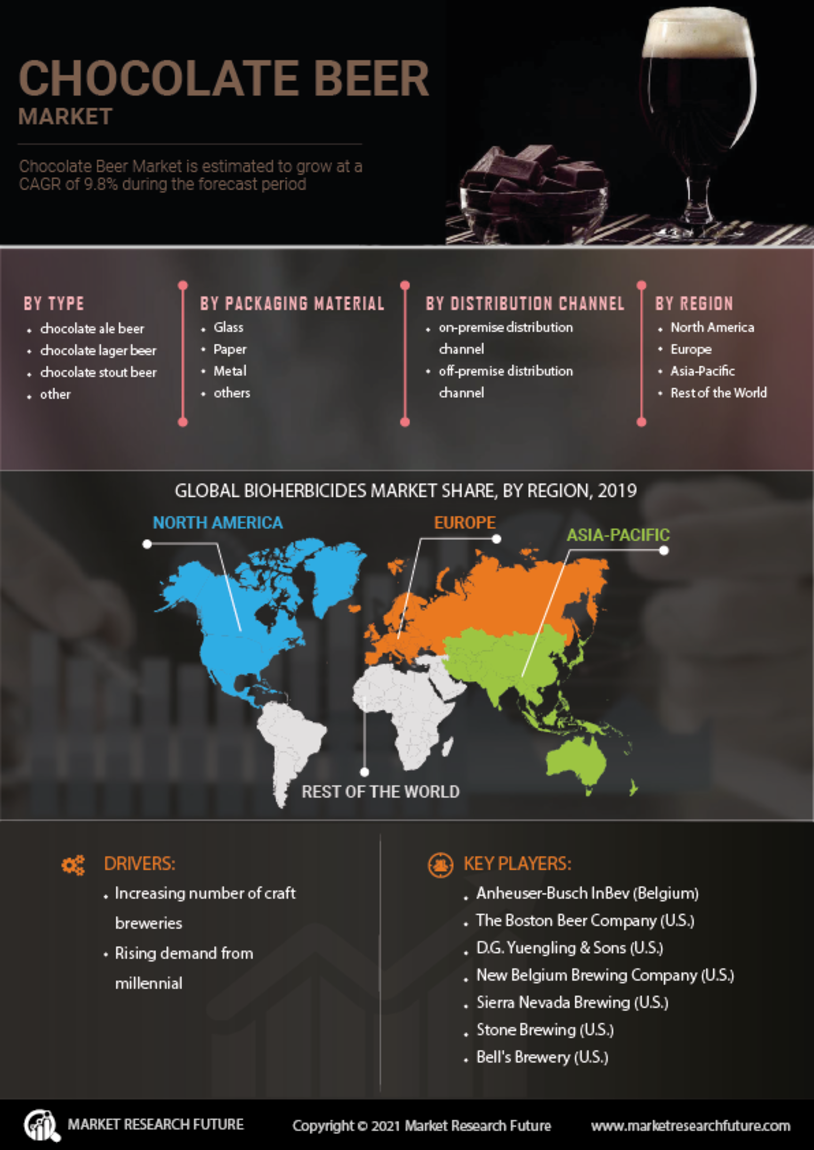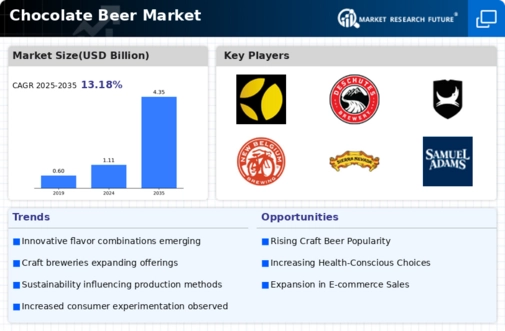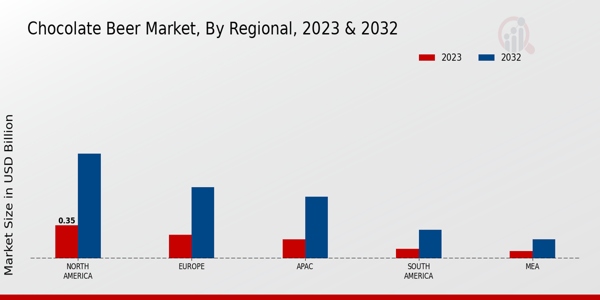Market Growth Projections
The Global Chocolate Beer Market Industry is projected to experience substantial growth, with forecasts indicating an increase from 1.11 USD Billion in 2024 to 4.35 USD Billion by 2035. This growth trajectory suggests a robust demand for chocolate beer, driven by evolving consumer preferences and innovative product offerings. The anticipated CAGR of 13.24% from 2025 to 2035 reflects the industry's potential for expansion, as more consumers seek unique and flavorful beverage options. This upward trend in market value highlights the importance of strategic marketing and product development to capture the attention of a growing audience.
Expansion of Distribution Channels
The Global Chocolate Beer Market Industry is witnessing an expansion of distribution channels, which is crucial for increasing accessibility to consumers. Traditional retail outlets, online platforms, and craft breweries are increasingly offering chocolate beer, thereby broadening its reach. This diversification in distribution not only enhances visibility but also caters to the growing demand for convenience among consumers. As the market evolves, the integration of e-commerce platforms is likely to play a significant role in driving sales. The anticipated growth to 4.35 USD Billion by 2035 underscores the importance of effective distribution strategies in capturing a larger consumer base.
Emergence of Global Craft Beer Festivals
The Global Chocolate Beer Market Industry is positively influenced by the emergence of global craft beer festivals, which serve as platforms for showcasing innovative products. These festivals attract a diverse audience, providing opportunities for chocolate beer producers to engage with potential customers and industry stakeholders. By participating in such events, brands can enhance their visibility and promote their unique offerings. The growing popularity of craft beer festivals indicates a vibrant market environment, fostering collaboration and creativity among producers. This trend may contribute to the industry's overall growth, as it encourages experimentation and the introduction of new chocolate beer varieties.
Seasonal and Festive Consumption Patterns
The Global Chocolate Beer Market Industry benefits from seasonal and festive consumption patterns, particularly during holidays and special occasions. Chocolate beer is often marketed as a seasonal specialty, appealing to consumers looking for indulgent options during festive periods. This seasonal demand can significantly boost sales, particularly in winter months when rich flavors are favored. The industry's growth trajectory suggests that leveraging these seasonal trends could enhance market performance. As the market evolves, producers may increasingly focus on limited-edition releases to capitalize on these consumption patterns, further driving growth.
Growing Consumer Interest in Craft Beverages
The Global Chocolate Beer Market Industry is experiencing a notable surge in consumer interest towards craft beverages. This trend is driven by a growing preference for unique flavors and artisanal products. As consumers increasingly seek out distinctive taste experiences, chocolate beer, with its rich and complex flavor profile, stands out as an attractive option. This shift is reflected in the market's projected growth, with the industry expected to reach 1.11 USD Billion in 2024. The craft beer segment, which includes chocolate beer, is anticipated to expand significantly, appealing to adventurous consumers looking for innovative beverage choices.
Health Consciousness and Innovative Ingredients
In the Global Chocolate Beer Market Industry, there is a rising trend towards health consciousness among consumers. Many chocolate beers incorporate ingredients perceived as healthier, such as organic cocoa or lower-calorie options. This aligns with the broader movement towards wellness and mindful consumption. As consumers become more discerning about their choices, the inclusion of innovative ingredients in chocolate beer may enhance its appeal. The market is projected to grow at a CAGR of 13.24% from 2025 to 2035, indicating that health-oriented innovations could play a pivotal role in driving the industry's expansion.








